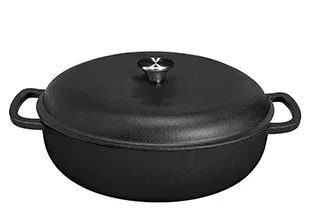
what material is a dutch oven made of
The Composition of Dutch Ovens An Overview
Dutch ovens are beloved kitchen staples, known for their versatility, durability, and ability to retain heat. Commonly used for braising, roasting, baking, and simmering, these heavy, thick-walled pots have earned a special place in the hearts of home cooks and professional chefs alike. A key question that arises for many is what material is a Dutch oven made of? Understanding the materials that constitute a Dutch oven will help shoppers make informed decisions when choosing one for their culinary adventures.
The Composition of Dutch Ovens An Overview
Modern improvements have led to the development of enameled cast iron Dutch ovens, which add a layer of convenience and aesthetic appeal. The enameled coating provides a non-reactive surface, preventing foods from sticking and eliminating worries about oxidation, which can occur in uncoated cast iron. This coating is available in a variety of colors, making it a stylish addition to any kitchen. Brands like Le Creuset and Staub have popularized enameled cast iron Dutch ovens, elevating them to iconic status among culinary tools.
what material is a dutch oven made of

Another material that has gained traction in the manufacturing of Dutch ovens is aluminum. Aluminum Dutch ovens are often lighter than their cast iron counterparts, making them easier to handle. They typically feature a non-stick coating, which also contributes to easy cleanup. However, while they heat up quickly and can be more convenient for daily cooking, they may not retain heat as effectively as cast iron, which could affect cooking results over long periods.
Some manufacturers have begun to produce ceramic Dutch ovens, catering to those who prefer a lighter and more colorful option. These might not offer the same level of heat retention as cast iron or aluminum, but they can still be great for baking casseroles or dishes that require a more delicate cooking process. Ceramic Dutch ovens are often safe for use in microwaves and are quite easy to clean.
There are also stainless steel Dutch ovens available, which appeal to those looking for non-reactive and easy-to-maintain cookware. Stainless steel is durable and resistant to rust, making it an appealing choice. However, these pots typically do not retain heat in the same way as cast iron or enameled cast iron, meaning that adjustments may be necessary for recipes that require slow and steady cooking.
In conclusion, the material of a Dutch oven can significantly influence its performance and suitability for various cooking methods. Cast iron remains the classic choice, beloved for its heat retention and versatility. Enameled cast iron offers a modern twist with its non-reactive surface and beautiful finishes, while aluminum provides a lightweight alternative for everyday use. As home cooks explore their options, understanding the materials at play will help them select the perfect Dutch oven for their culinary needs. Whether for stews, roasts, or delicious baked goods, there's a Dutch oven for everyone.
-
High Quality Kitchen Durable Black Round Cast Iron Cookware Pancake Crepe Pan With Wooden Handle-Baixiang County Zhongda Machinery Manufacturing Co., Ltd.|non-stick surface&even heat distributionNewsAug.09,2025
-
High Quality Kitchen Durable Black Round Cast Iron Cookware Pancake Crepe Pan With Wooden Handle-Baixiang County Zhongda Machinery Manufacturing Co., Ltd.|Non-Stick, Heat Retention, DurableNewsAug.08,2025
-
High Quality Cast Iron Cookware - Baixiang County Zhongda Machinery | Nonstick, Heat RetentionNewsAug.08,2025
-
Cast Iron Cookware- Baixiang County Zhongda Machinery|Non-Stick, Heat RetentionNewsAug.08,2025
-
High Quality Kitchen Durable Black Round Cast Iron Cookware-Pancake Crepe Pan With Wooden Handle|Nonstick Surface&High-Temperature ResistanceNewsAug.08,2025
-
Durable Enamel Coated Pans: Easy Clean & Versatile CookwareNewsAug.08,2025


